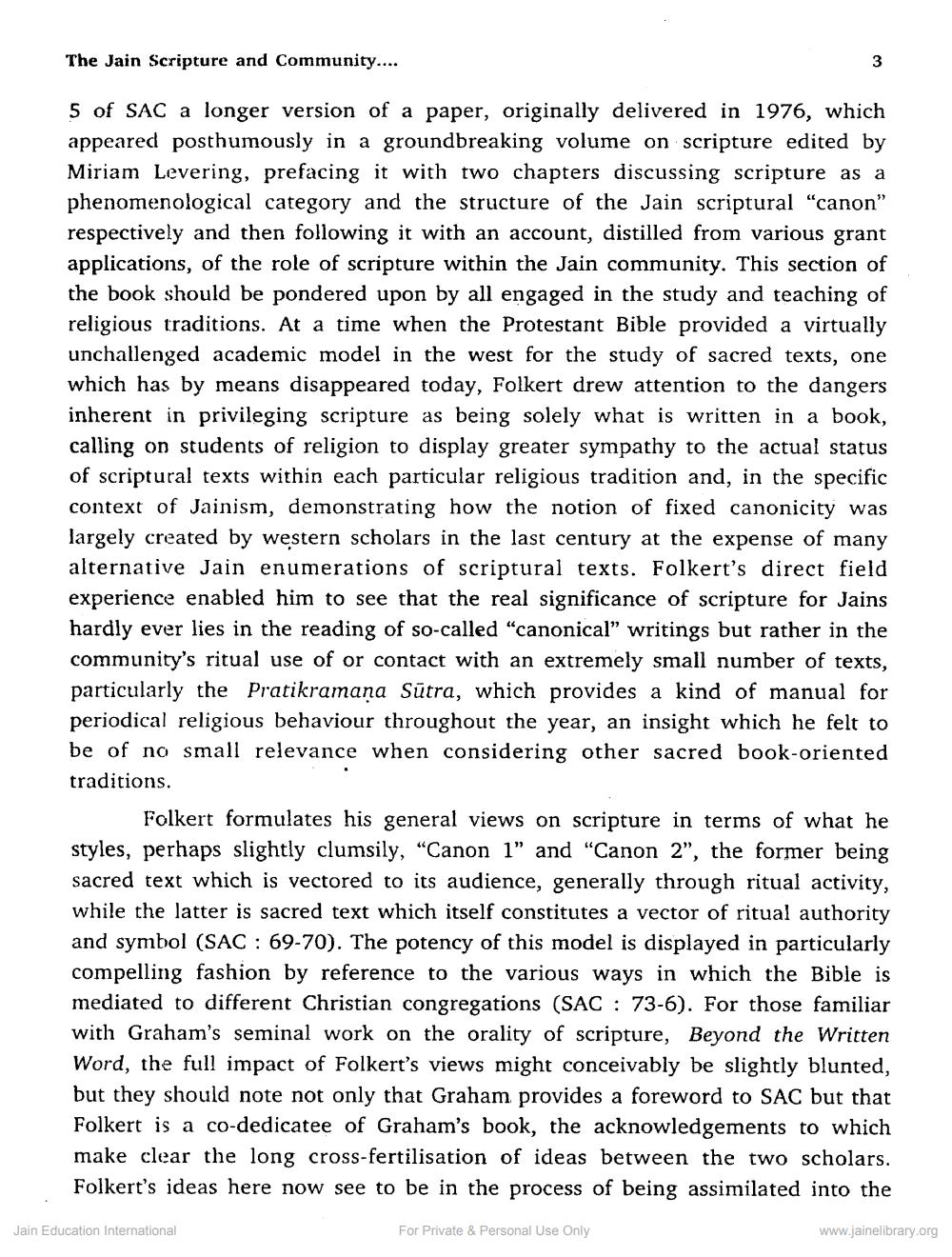________________
The Jain Scripture and Community....
5 of SAC a longer version of a paper, originally delivered in 1976, which appeared posthumously in a groundbreaking volume on scripture edited by Miriam Levering, prefacing it with two chapters discussing scripture as a phenomenological category and the structure of the Jain scriptural "canon" respectively and then following it with an account, distilled from various grant applications, of the role of scripture within the Jain community. This section of the book should be pondered upon by all engaged in the study and teaching of religious traditions. At a time when the Protestant Bible provided a virtually unchallenged academic model in the west for the study of sacred texts, one which has by means disappeared today, Folkert drew attention to the dangers inherent in privileging scripture as being solely what is written in a book, calling on students of religion to display greater sympathy to the actual status of scriptural texts within each particular religious tradition and, in the specific context of Jainism, demonstrating how the notion of fixed canonicity was largely created by western scholars in the last century at the expense of many alternative Jain enumerations of scriptural texts. Folkert's direct field experience enabled him to see that the real significance of scripture for Jains hardly ever lies in the reading of so-called "canonical" writings but rather in the community's ritual use of or contact with an extremely small number of texts, particularly the Pratikramana Sūtra, which provides a kind of manual for periodical religious behaviour throughout the year, an insight which he felt to be of no small relevance when considering other sacred book-oriented traditions.
Folkert formulates his general views on scripture in terms of what he styles, perhaps slightly clumsily, “Canon 1" and "Canon 2”, the former being sacred text which is vectored to its audience, generally through ritual activity, while the latter is sacred text which itself constitutes a vector of ritual authority and symbol (SAC : 69-70). The potency of this model is displayed in particularly compelling fashion by reference to the various ways in which the Bible is mediated to different Christian congregations (SAC : 73-6). For those familiar with Graham's seminal work on the orality of scripture, Beyond the Written Word, the full impact of Folkert's views might conceivably be slightly blunted, but they should note not only that Graham provides a foreword to SAC but that Folkert is a co-dedicatee of Graham's book, the acknowledgements to which make clear the long cross-fertilisation of ideas between the two scholars. Folkert's ideas here now see to be in the process of being assimilated into the
Jain Education International
For Private & Personal Use Only
www.jainelibrary.org




